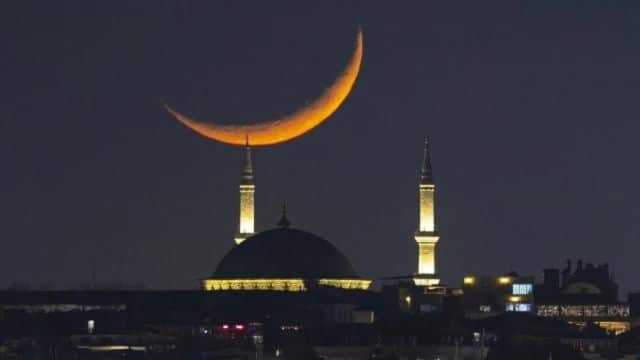Astronomical dates announced for Arafat day, Eid Al Adha 2023
Mon 12 Jun 2023
On Sunday, June 18, 2023, which corresponds to Dhu Al Qi’dah 29, 1444 AH, the investigation of the crescent of the month of Dhu Al Hijjah will take place in various Islamic countries.
Even with the aid of a telescope, it will be challenging to see the crescent on this day, especially if you’re in the Islamic center or west. As a result, it is projected that many nations will recognize Monday, June 19, as the start day of the month of Dhu Al Hijjah. The first day of Eid Al Adha is anticipated to be Wednesday, June 28, and the Arafah day is anticipated to be Tuesday, June 27.
The crescent’s placement on Sunday, June 18, 2023, in a number of Arab and Islamic towns denotes the following:
- Jakarta: The moon is 6.5 hours old and sets 7 minutes after sunset. However, it is impossible to see the crescent in Jakarta, not even with a telescope.
- Abu Dhabi: The moon is 12.4 hours old and sets 29 minutes after sunset. Abu Dhabi is similar to Jakarta in that it is impossible to see the crescent, even with a telescope.
- Riyadh: The moon is 13 hours old and sets 31 minutes after sunset in Riyadh. It is challenging to see the crescent in Riyadh, necessitating the use of a telescope. However, for successful visibility, extremely clear skies are required.
- Amman and Jerusalem: The moon rises 37 minutes after sunset and sets 13.8 hours later in Amman and Jerusalem. It is still difficult to see the crescent in these places without a telescope, especially in the eastern and central parts of the sky. A clear sky is essential for the best visibility.
- Cairo: The moon is 14 hours old and sets 36 minutes after sunset. Cairo also needs a telescope to see the crescent, as it does in Amman and Jerusalem. For clearer sky and better visibility.
- Rabat: The moon is 16.2 hours old and sets 44 minutes after sunset. In Rabat, it is possible to see the crescent using a telescope.
But it’s still difficult, especially in the eastern and central parts of the country. A clear sky is required for the best visibility.
It is crucial to remember that these calculations, which are based on surface observations, give an idea of the crescent’s anticipated visibility in the aforementioned cities.
In many Islamic countries, the start of the month of Dhu Al Hijjah and the date of Eid Al Adha are determined by local moon observations. They adhere to their own seeing committees or organizations that are in charge of confirming crescent moon sightings in their own nations.
These countries include the majority of non-Islamic countries speaking Arabic in Africa as well as Malaysia, Indonesia, Brunei, Pakistan, Bangladesh, Iran, the Sultanate of Oman, the Kingdom of Morocco, Mauritania, and Turkey.
It is anticipated that some of the previous countries will declare Tuesday, June 20, as the first day of the month of Dhu Al Hijjah and that Thursday, June 29, as the first day of Eid Al Adha in these countries, given the fact that sighting the crescent on Sunday, June 18, is not possible by any means from the east of the Islamic world and that it is not possible on that day with the naked eye from the Islamic world.

 May 01 2024
May 01 2024













